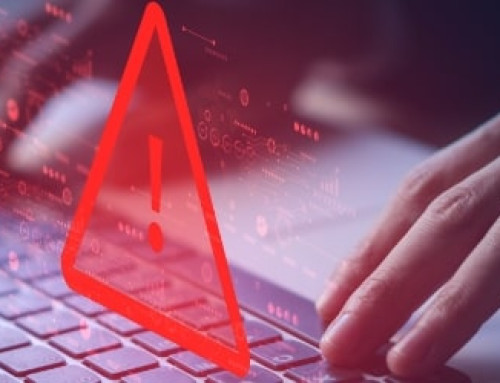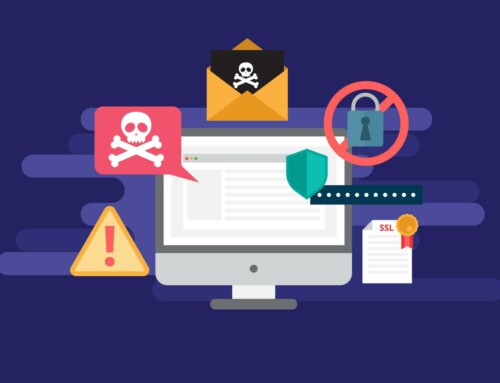A security operations center (SOC) is composed of analysts and tools that watch over your entire system. When a security threat shows up, they act fast to help keep everything safe. However, building an in-house SOC requires expertise, capital, and other resources that most small- and medium-sized businesses don’t have.
With SOC-as-a-Service, those problems fade. You gain a dedicated partner who handles the daily work and strengthens your defenses while you focus on your core business.
What is SOC-as-a-Service (SOCaaS)?
SOCaaS is a subscription-based service where an external team watches your systems for any dangers via the cloud. SOCaaS works well for businesses that don’t have the time, budget, or expertise to run a full SOC, yet still need strong, reliable protection.
How does SOC-as-a-Service work for businesses?
A strong service SOCaaS model blends modern security strategy, technology, and expertise. SOCaaS typically includes the following features:
- Service level agreements (SLAs): These agreements define the scope of services and response times, giving you peace of mind that your security needs are being met.
- Threat detection and monitoring: The system continuously monitors your computers and cloud accounts for security threats.
- Security tools: Your SOCaaS provider will install advanced defense tools, including firewalls and intrusion detection systems.
- Incident response capabilities: A full SOC team watches your systems and intervenes at the first sign of a potential threat.
What are the key benefits of SOC-as-a-Service?
There are several clear and measurable advantages to implementing SOCaaS:
Access to best-in-class cybersecurity solutions
SOCaaS gives SMBs access to a comprehensive suite of security tools without large upfront costs. These security tools gather and analyze data from all over your system, and then generates reports and automated responses to uncover potential threats, fix vulnerabilities, and strengthen your overall security.
Proactive threat hunting
SOCaaS providers act like threat hunters who look for weak spots before attackers find them. They study the latest threat intelligence databases, watch how your systems behave, and review log data for anything unusual. For instance, should an employee’s credentials be used to attempt access to the system from an unusual location, your SOCaaS provider will be alerted and can also automatically take action action. Finding these issues early gives your business time to fix them before cybercriminals can use them to get in.
Faster detection and response to security events
SOCaaS helps spot problems faster and react sooner. Security analysts watch alerts as they come in and direct each incident responder on what to do next. Acting quickly keeps the issue from spreading and causing bigger problems. This fast response protects your network, your apps, and your cloud infrastructure from a much more serious security breach.
Reduced overhead
Many SMBs struggle to fund an in-house SOC or full security team. A cost-effective model cuts hiring, training, and staffing expenses, allowing you to receive support from an external SOC team that operates at enterprise scale.
Continuous monitoring and protection
A managed SOC gives your business constant visibility into your networks, users, and systems. It continuously monitors activity and reacts quickly when something suspicious is detected. This provides ongoing protection that helps prevent attacks and minimize damage if one does occur.
Adherence to compliance and regulations
Many data compliance regulations such as HIPAA or PCI DSS require businesses to prevent and respond to threats. A managed SOCaaS team supports these needs by protecting your systems and documenting security events.
How to evaluate SOC-as-a-Service providers
No two SOCaaS vendors offer identical support. Carefully reviewing the following criteria will help you select the right third-party vendor:
Provider’s size and years in operation
The provider’s history and scale play an important role in reliability. SOCaaS providers with years of experience are much more proficient at handling security events across systems and users.
Service offerings
A comprehensive SOCaaS service plan should cover threat monitoring, incident response strategies, and threat mitigation. Look for providers that can cover all aspects of your IT, rather than offering a basic security monitoring service.
Expertise of the security team
The quality of the provider’s security professionals matters. Look for teams with experience in threat prevention and are able to control high-pressure situations. Strong technical and analytical skills help them respond faster and with fewer mistakes. Choosing a provider with a capable SOC team gives you confidence that each alert is handled correctly and with care.
Understanding of compliance and industry regulations
Your partner should understand your industry’s rules and risk requirements. This helps the third-party provider build a program that protects sensitive data. A provider with compliance knowledge supports audits and documentation with ease. Their guidance keeps your operation aligned with compliance requirements.
Pricing model
Assess the provider’s pricing structure and try to fully understand what you’ll get for what you pay. Some providers charge based on the number of users, devices, data volume, or even a combination of these variables. Meanwhile, others may charge a flat rate for a service package. Clear pricing helps you understand the ongoing commitment and how costs may shift as your business grows. Pick a SOCaaS vendor that aligns with your budget and security goals.
Strengthen your defenses with Dynamic Solutions Group
With SOCaaS, you gain constant protection, expert support, and a stronger security foundation. If you’re ready to simplify security and safeguard your operations, Dynamic Solutions Group is here to help. Contact us today to get started.




